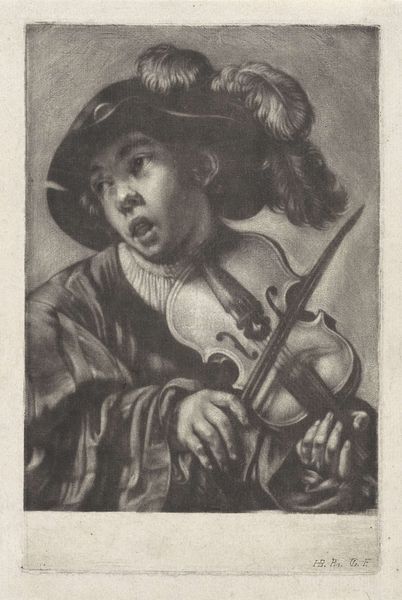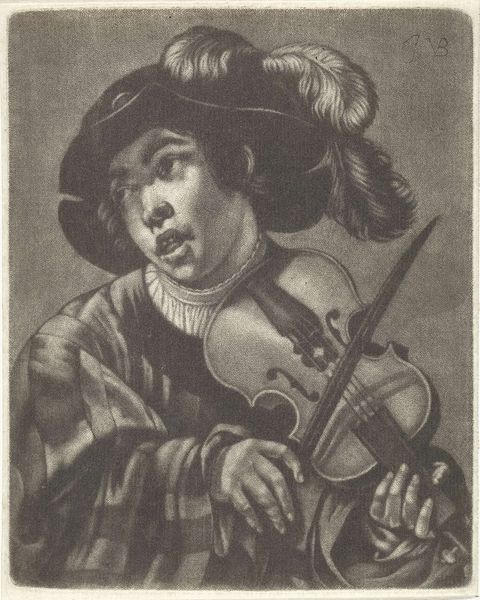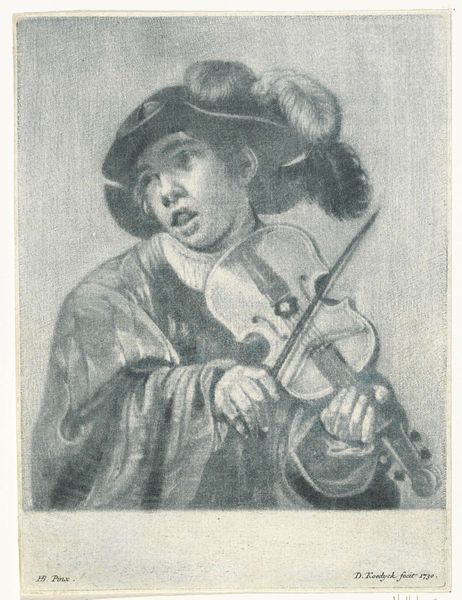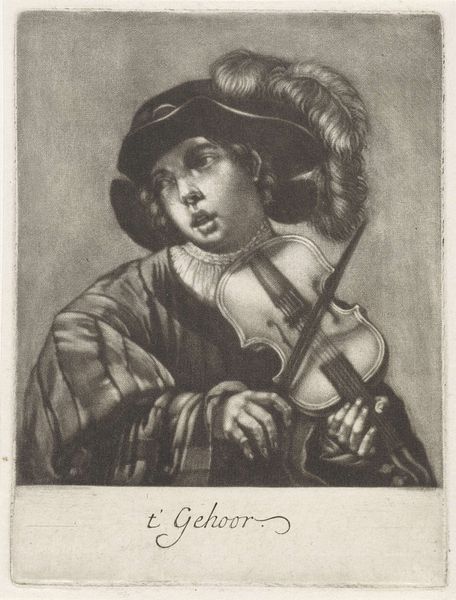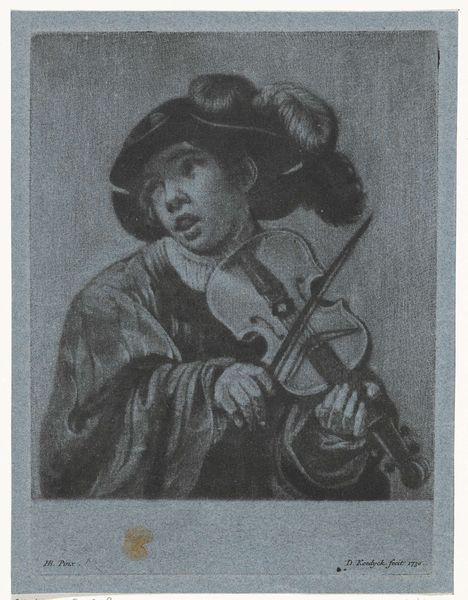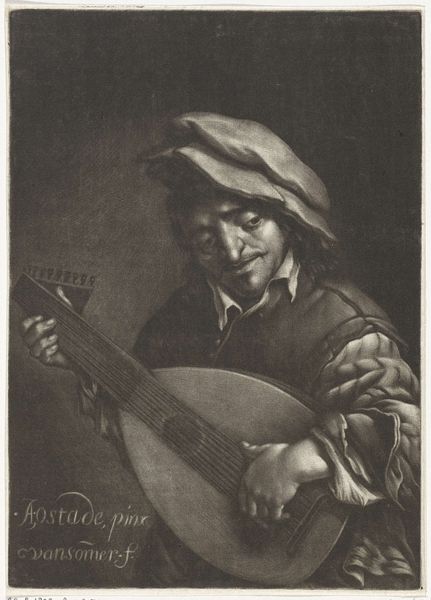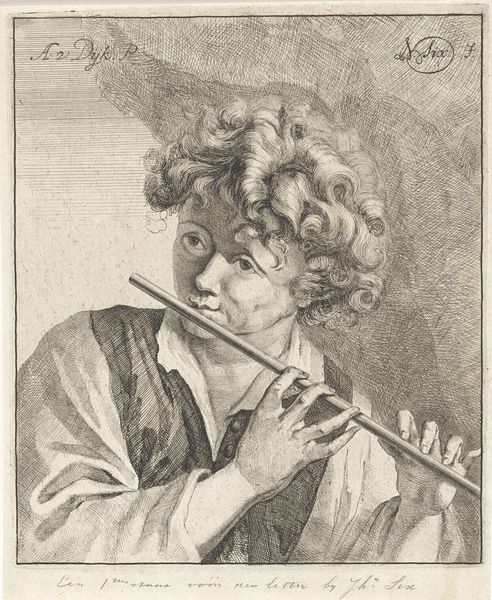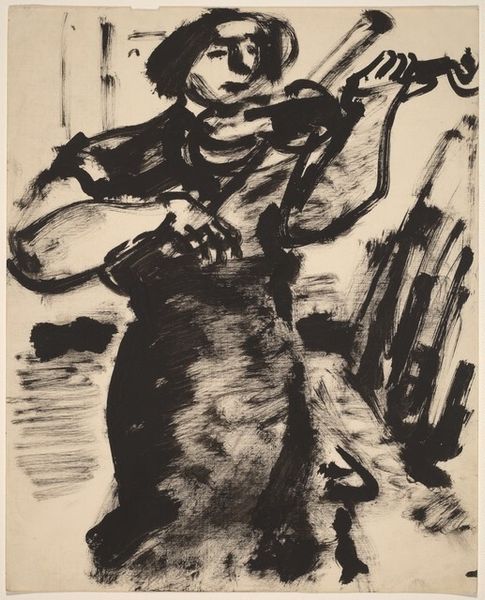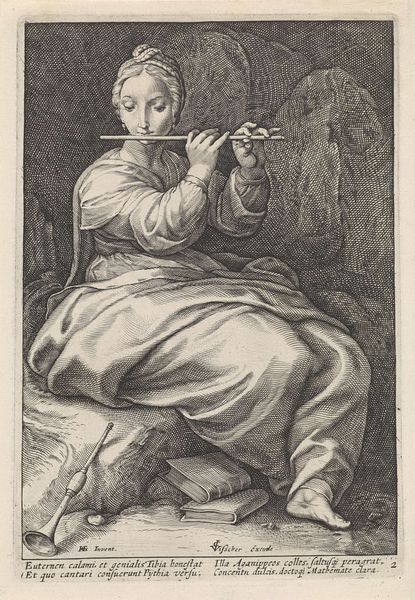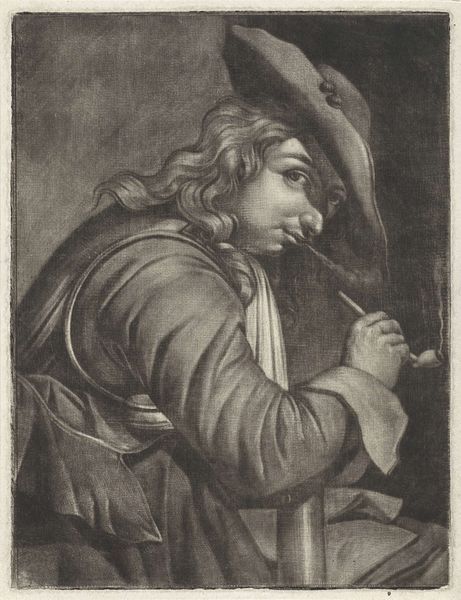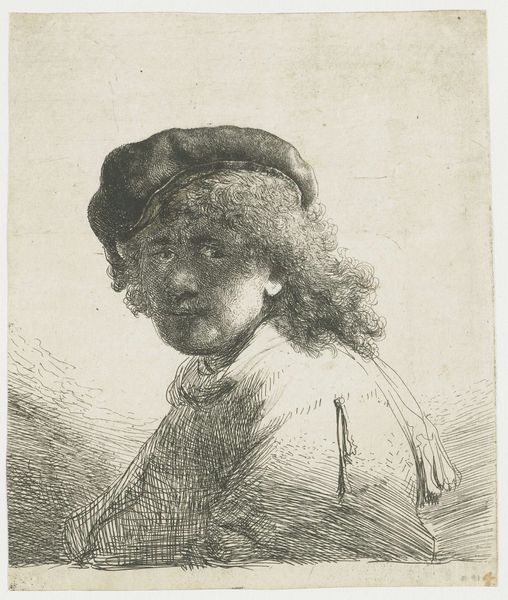
print, ink, engraving
#
portrait
#
baroque
# print
#
charcoal drawing
#
figuration
#
ink
#
line
#
engraving
Dimensions: height 154 mm, width 120 mm
Copyright: Rijks Museum: Open Domain
Curator: So, here we have an engraving called "Vioolspeler," dating roughly between 1660 and 1800. The artist is, alas, anonymous. It's a charming image of a violin player rendered in ink. What are your first impressions? Editor: Well, the textures created through the engraving are quite interesting. The subject's garments, the feathers on the hat, even the wood of the violin all have such distinct visual qualities. What do you see in this piece that goes beyond just the representational aspect? Curator: I'm immediately drawn to the means of production. Look at how the engraver utilizes the line – how they manipulate it to create tonal variations, depth, and form. This wasn’t just about depicting a violinist; it was about showcasing a skill, about the labour involved. What do you notice about the relationship between the violin and the figure’s hands? Editor: I see how the artist painstakingly depicted the violin's contours with the subject's own hand's dexterity, really drawing the viewers' eyes to the technique and difficulty involved. Was there any effort to distinguish ‘high art’ like portraiture with more commonplace art found in printed engravings at this time? Curator: Exactly! This raises questions about accessibility, circulation, and the democratization of imagery. Engravings like these made art available to a broader public. And how were these prints used? Were they for study, decoration, or even propaganda? Consider the role of workshops, the division of labor, and the market forces driving their production. Think about the consumption of images. Did they shape social values or merely reflect them? Editor: That’s fascinating. I hadn’t considered the wider social implications of just how art was produced back then. So much goes into what we see in a museum today, beyond just the artist's hand. Curator: Indeed. By focusing on materiality and production, we uncover layers of meaning and social context that enrich our understanding of art. Editor: I'll definitely be paying more attention to those things from now on. Thanks!
Comments
No comments
Be the first to comment and join the conversation on the ultimate creative platform.

